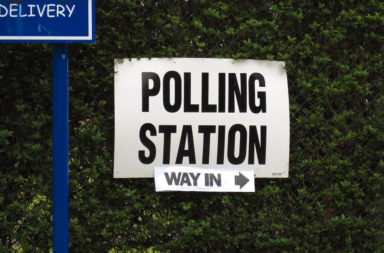One of the first cases that the Supreme Court will hear this term could make a huge difference in how legislative and congressional districts are drawn. In Gill v. Whitford, Wisconsin Democrats claim that Republicans drew lines that virtually guarantee GOP control of both houses of the state legislature.
A lower court struck down the Wisconsin districting system as an unconstitutional partisan gerrymander – an impermissible manipulation of district lines for the benefit of the party in power. A Supreme Court decision upholding that ruling could prevent the party in control of each state’s redistricting process from drawing lines in its favor.
This case will force the Supreme Court to tackle questions that have long gone unanswered. Can the courts actually rule on partisan gerrymandering? And if so, how will they evaluate such claims?
Rise of the gerrymander
Partisanship always has been a big factor in redistricting. The term gerrymandering was coined in 1812, after Massachusetts Gov. Elbridge Gerry approved a plan in which one district was shaped like a salamander. Both parties have tried to manipulate district lines to their own advantage ever since.
Two recent factors have led to increased concern about partisan gerrymandering all over the country. Sophisticated software makes it easy to manipulate the lines for partisan advantage. And growing ideological polarization between the parties encourages them to do that. In the past couple of years, lawsuits over partisan gerrymandering have cropped up in Maryland, North Carolina, Texas and Virginia.
The Supreme Court has never struck down a partisan gerrymander, but it has rejected other districting manipulations. The “one-person, one-vote” principle means districts should be roughly equal, so that everyone’s vote is equal. And racial gerrymandering is impermissible.
This is what makes the Wisconsin case so noteworthy. Its potential impact might explain why more than 50 amicus briefs have been filed by a wide range of groups whose interests could be affected by whatever decision the Supreme Court makes.
Who decides?
In Gill v. Whitford, the justices face two important questions.
First, may courts even consider partisan gerrymandering claims? The Supreme Court has given mixed signals here. A 1986 case, for example, ruled that courts could consider partisan gerrymandering, but found no constitutional defect in Indiana’s legislative districts. But in another case from Pennsylvania in 2004, four justices concluded that courts could not consider partisan gerrymandering claims, while a fifth rejected the challenge on the merits.
Finding a manageable legal standard for partisan gerrymandering might be more complicated than it is for other districting problems. In one-person, one-vote cases, for instance, a court can look at population differences between districts.
Racial gerrymandering disputes can be complicated, but courts have devised rough and ready tests. The Supreme Court had no trouble striking down the Alabama legislature’s almost surgical redrawing of Tuskegee’s boundaries to remove virtually every black voter from the city while leaving every white voter in place.
But in places with racially polarized voting, it can be challenging to tell whether a case involves a racial gerrymander or a partisan gerrymander. Although the Wisconsin case doesn’t really pose this problem, it has arisen in many others.
Testing the boundaries
Still, if we accept that districting is “fundamentally a political affair,” as Justice Sandra Day O’Connor once put it, how much partisan manipulation is too much? Any answer to that question involves some type of statistical analysis, and courts are not terribly comfortable with math.
Some states require that their districts be compact and contiguous, meaning that they have more or less regular shapes and that all parts of the district are geographically connected. However, that’s not explicitly embodied in federal law. The Wisconsin Democrats have offered a relatively simple index called the efficiency gap as a measure of partisan gerrymandering. This index estimates how many voters are packed into safe districts, instead of being spread out to make more districts competitive.
A number of leading scholars, including the expert used by Wisconsin Republicans in drawing the state’s legislative districts, contend that there are other generally accepted methods for evaluating partisan gerrymandering claims. For example, a partisan symmetry test would explore whether one party has to get more votes than the other party in order to win the same number of seats.
But the Wisconsin parties disagree about that contention. The Republicans contend that these tests are too complex and fail to provide a “limited and precise” standard for evaluating partisan gerrymandering claims.
Constitutionality
This gets us to the second question that the Supreme Court might have to address. If the justices agree that courts may decide partisan gerrymandering cases, they then will have to determine whether the Wisconsin districting system violates the Constitution.
The Constitution doesn’t say anything explicit about gerrymandering of any kind. The basic argument against it says that partisan gerrymandering is inconsistent with basic concepts of self-government. Parties who challenge partisan gerrymandering couch their arguments in terms of the Due Process and Equal Protection Clauses of the 14th Amendment. Some commentators also have suggested that partisan gerrymandering violates the First Amendment.
This means the Supreme Court will have to decide whether the lower court’s decision to reject the Wisconsin district lines was legally sound. The justices could uphold that decision. Or they could decide that the lower court used an incorrect legal standard and remand the case for further consideration under the correct standard.
Potential impact
The stakes in this case are enormous. If the Wisconsin Democrats win, we should expect the minority party in many states to sue over redistricting plans that advantage the majority party. This already happens in one-person, one-vote disputes, as well as in claims of racial gerrymandering.
But if the Wisconsin Republicans win, we can expect even more partisan manipulation in redistricting, a process which must be done after every census. This will make it easier for representatives to choose their voters rather than for voters to choose their representatives.
Neither outcome provides grounds for optimism. Either court proceedings will generate uncertainty over district lines or politicians will maneuver for partisan advantage.
Maybe this Wisconsin case will encourage greater use of independent commissions for redistricting. This is how Arizona, California, Idaho and Washington do it. And the Supreme Court in 2015 upheld the Arizona system against a constitutional challenge. Or we might devise other ways to elect legislators.
But let’s not be naïve. Politics, as Mr. Dooley long ago explained, ain’t beanbag. How district lines are drawn is only part of the problem of promoting responsible government.




